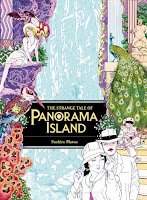 Creator: Hiroaki Samura
Creator: Hiroaki Samura
U.S. publisher: Dark Horse
ISBN: 9781595827517
Released: October 2011
Original release: 2008
Awards: Eisner Award, Japan Media Arts Award
Massacre is the twenty-fourth volume in the English-language release of Blade of the Immortal, Hiroaki Samura’s long-running manga series. Earlier on in the series’ release, Dark Horse divided the volumes by storyline rather than by number of chapters. Because of this, many of the individual volumes are slightly different in the English-language edition compared to the original Japanese release of Blade of the Immortal. Massacre, published by Dark Horse in 2011, collects the same chapters as the twenty-third volume of the Japanese edition of the series which was released in 2008. At this point, the manga has entered its final major story arc. The previous two volumes, Footsteps and Scarlet Swords, provided the necessary set up which allows Samura to really let loose in Massacre. As can be assumed from the title, it’s a rather bloody volume.
As agreed, the Ittō-ryū is leaving Edō after being banished from the city. However, the rogue sword school is still being chased by Habaki Kagimura and his Rokki-dan warriors as well as by Rin Asano and her bodyguard Manji. But what the pursuers don’t yet realize is that there are key members missing from the group of Ittō-ryū said to be making its way to the port in Hitachi: the sword school’s leader Anotsu Kagehisa and three of its elite fighters—Magatsu Taito, Ozuhan, and Baro Sukezane. The four highly skilled swordsmen have their own task to complete, a bold raid on Edō Castle through one of its most heavily guarded entrances. It’s a brash move that, if successful, will leave quite an impression in its wake, not to mention a high body count. The Ittō-ryū has already been identified as a threat, but they are prepared to show just how dangerous they can be.
Samura’s artwork in Blade of the Immortal has always been something that has particularly appealed to me about the series, but his kinetic style works especially well in Massacre. A large part of the volume is devoted to the daring attack on Edō Castle; the sequence is one of the most effectively choreographed and visually executed battles in Blade of the Immortal thus far. The Ittō-ryū is a group of swordsmen sharing the same ideals and martial philosophy more than it is a strictly enforced style. This can especially be seen in Massacre simply by watching how the Ittō-ryū’s elite fight. They all use different weapons and techniques and each has his own aura. Anotsu’s elegance, Magatsu’s cruder dynamism, Ozuhan’s speed and uninhibited wildness, and Baro’s strength and power are all readily apparent. They fight well as individuals, but also work well together as a team.
Although the focus of Massacre is on the raid of Edō Castle—a quickly paced, action packed, violent, and rather impressive escapade—several other important things happen in the volume as well. For the last few volumes of Blade of the Immortal Shira has been on the fringe of the story, but his prominence is quickly growing. He may have lost a limb or two over the course of Blade of the Immortal but his extreme sadistic streak and penchant for sexual violence remain. Shira is as terrifying as ever. Also making his return to the series was Ayame Burando, which I was surprised but happy to see. He and Manji even end up having a heart-to-heart about atonement and the meaning of evil. These are themes that play a major role in Blade of the Immortal, one of the reasons that I like the series so well. As always, I’m looking forward to reading the next volume, Snowfall at Dawn.







